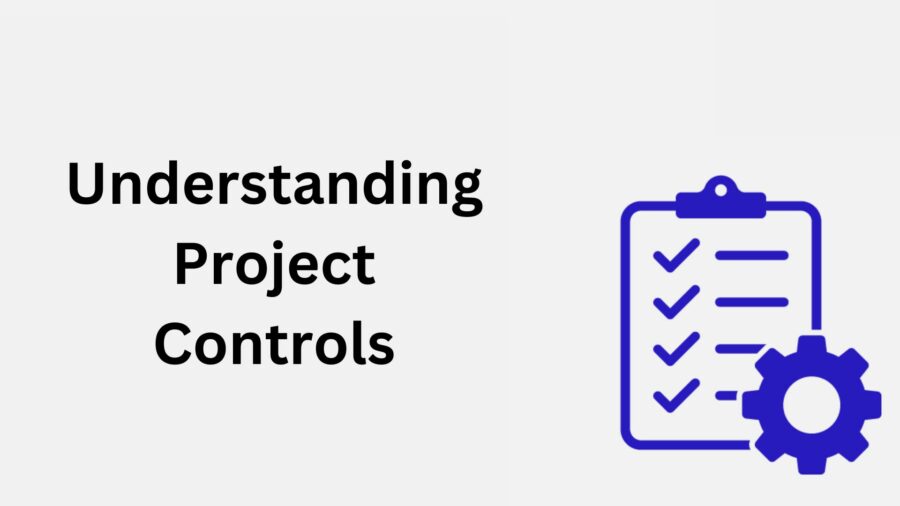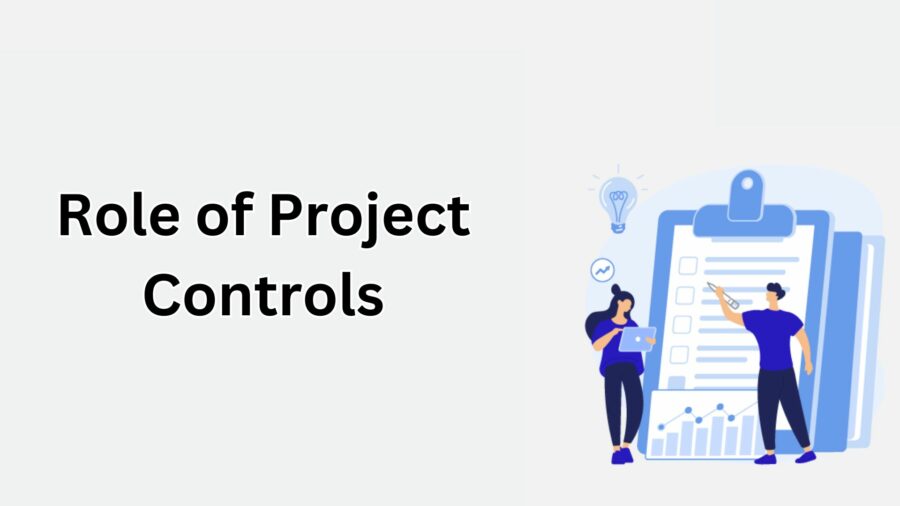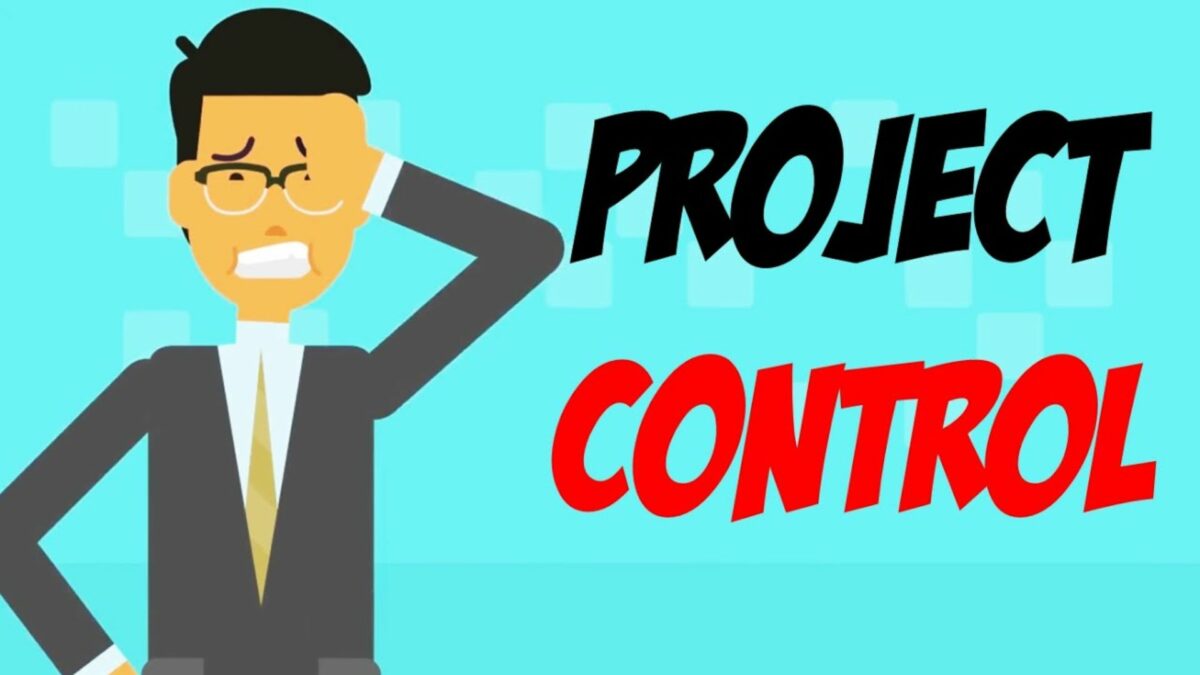Project Controls: Best Practices and Future Trends for 2024
In the ever-evolving world of project management, one term you’ll frequently encounter is “Project Controls.” But what does it mean? And why is it so pivotal to the success of your projects?
Project controls are the data gathering, management, and analytical processes used to predict, understand, and constructively influence the time and cost outcomes of a project. It’s the heartbeat of every project, the core that keeps everything in check.
In this article, I’ll demystify project control, breaking it down to its core components. We’ll explore the importance of project control, its key elements, and how it can make or break your project success. So, whether you’re a seasoned project manager or just starting out, this piece will provide you with valuable insights.
What is Project Controls?

Diving into this crucial topic, we’ll first explore the meaning of project control and understand its fundamental definition.
The Definition of Project Controls
Project control, in simpler terms, denote a set of procedures, systems, and tools used by organizations to manage their projects. Forget corporate jargons; just think of it as a referee, setting the rules, keeping track of the game, and ensuring that everything goes according to plan. It deals with the prediction of potential scenarios, understanding project pace, and influencing changes for timeliness and cost-effectiveness.
When it comes to project management, you might correlate success merely with completion. But, I’d say, one should also focus on achieving the results within the specified timeframe and budget. That’s where project control step in.
Elements of Project Controls
Project control isn’t just one approach or technique. It’s a collection of multiple elements that work together to ensure effective project management. These major elements include:
Cost Management:Tracking expenses, preparing projections, and matching actual spendings against forecasted ones exemplify this element.Schedule Management:This involves outlining the project timeline, identifying milestones, and ensuring adherence to set timeframes.Risk Management:Identification, analysis, and mitigation of potential risks form the core of this component.Quality Management:This focuses on maintaining the desired standards of the project by adhering to predefined specifications and meeting client expectations.Change Control:Any alterations or modifications to the initial project plan are managed under this element.
By piecing together these elements, we get a clear picture of project controls. These ensure that our projects stay on track and deliver high-quality results within the planned cost and time parameters. And must I add, that’s exactly what sets successful projects apart.
The Role of Project Controls in Project Management

The role of project controls in project management can’t be overstated. They act as the backbone of effective project management, covering critical areas that can make or break a project’s success.
Avoiding Cost Overruns
Project control act as a vigilant guard against cost overflows. By incorporating rigorous cost management procedures, project control keep a tight grip on the budget. The task includes tracking actual expenditures against expected ones. When a potential cost overrun is detected, necessary adjustments are made swiftly. For instance, if additional equipment expenses suddenly rise, they’re offset by either reducing other costs or securing more funding, keeping the project on track.
Ensuring Timely Project Delivery
Just as crucially, project control assist in maintaining project schedules, thus ensuring timely delivery. By integrating schedule management tools, project control consistently monitor project progress. They match the actual project timelines against the planned ones, identifying any delays or advances. In circumstances where project tasks lag behind, immediate responses are activated, like reallocating resources. An example would be moving staff from less critical tasks to more urgent ones, helping to bring the project back on schedule.
Through the vigilant application of these control mechanisms, project controls play a decisive role in ensuring project management success.
Key Components of Effective Project Controls
Diving deeper, let’s explore essential facets of project controls that seal the deal of project success. These components illuminate a path for project teams and stakeholders, shepherding them towards their common goal – Project Completion.
Cost Management
Accurate cost forecasting forms the backbone of diligent cost management. It ensures that project resources, both human and material, are used efficiently. Myriad tools in the realm of project control aid in planning, estimating, budgeting, and controlling costs, ensuring that a project can be completed within an approved budget. To further illustrate this with an example, software like Microsoft Project and Primavera P6 facilitate efficient cost resource allocation and management.
Schedule Management
Next in line comes Schedule Management. Intricately tied with cost management, it averts project delays with timely planning and allocation of project tasks. With Gantt charts, network diagrams, or modern project management software, I can deftly schedule tasks, chart the project timeline, and provide regular progress updates. This proactive management not only keeps the project on track but also offers me a buffer to handle unforeseen circumstances, if any, that might cause a delay.
Quality Management
Quality Management is another vital component I dwell on. It’s a project controller’s mandate to ensure not just completion, but quality completion of projects. Employing tools like a Quality Management System (QMS), I can maintain consistent quality, meet project standards, and fulfill stakeholder expectations. An excellent example of this is Six Sigma, a data-driven methodology focused on eliminating defects and improving quality.
Risk Management
Lastly, it is worth highlighting Risk Management. A project seldom runs without glitches. However, the trick lies not in averting risks, but in anticipating and managing them effectively. My strategy involves risk identification, risk analysis, and formulating risk response strategies. In this way, regardless of what comes down the pipeline, I’m prepared to navigate it and steer the project to its successful closure. Several tools aid me in this process – Palisade @RISK is an example, assisting me in quantifying and modeling risks.
In summation, these are the key components in my arsenal of project controls, each one interlinked and integral to the overall success of the project management process. With these in place, any project, big or small, becomes a manageable and successful endeavor. Each component carries its weight, turning the cogwheels of effective project management.
Implementing Project Controls
To ensure successful project completion, appropriate project control implementation is necessary. Let’s dive deep into the practical steps involved in setting up these project controls and explore the tools and technologies that can aid in this process.
Steps for Setting Up Project Controls
Setting up project control involves a series of crucial steps. Let’s discuss each of them in detail for better understanding:
- Define Control Objectives: Clearly state the desired outcome, keeping project scope, time, cost, and quality in mind.
- Identify Critical Elements: Pinpoint key components such as cost management, schedule management, and quality management, to name just a few.
- Develop a Control Strategy: Formulate a strategic plan that effectively accommodates all these critical elements.
- Select Suitable Tools and Technologies: Choose aids like Microsoft Project or Primavera P6 that best serve your unique project needs.
- Implement the Strategy: Put the plan into action, aligning every task with the pre-defined control objectives.
- Monitor and Update: Continuously track the progress, updating the control plan as and when necessary.
Tools and Technologies for Project Controls
Implementing effective project control requires the right tools and technology. Several are available, each serving distinct project control needs:
- Microsoft Project: This tool assists in schedule planning, resource balancing, and progress tracking.
- Primavera P6: Ideal for multifaceted projects, Primavera P6 supports robust scheduling, resource allocation, and risk management.
- Gantt charts: Gantt charts offer a visual timeline for task scheduling, promoting transparent work allocation and progress tracking.
- Six Sigma: As a strategic tool, Six Sigma aids in quality management, emphasizing defect reduction to enhance overall project performance.
Using these tools and technologies can streamline the project control process, ensuring effective control over project scope, schedule, cost, and quality.
Case Studies: Project Controls in Action

In order to better understand the use of project control across different industries, let’s take a look at some case studies from Infrastructure and IT development projects.
Infrastructure Projects
In the field of civil construction, Infrastructure projects pose unique challenges, given their wide-ranging impacts and large scopes. An example to note is the reconstruction of the Interstate-35W Mississippi River bridge. Following its collapse in 2007, the Minnesota Department of Transportation launched a comprehensive project control strategy.
They defined the control objectives which included strict time, cost, and safety parameters. The critical elements of the project were identified, like weather challenges, which guided the development of a robust control strategy. The team chose Primavera P6 and Gantt charts as their project control tools.
The implementation phase involved rigorous quality control, timely updates, and regular inspections. Using these principles, the team reconstructed the bridge within 13 months, under budget, without compromising safety or quality. This example reiterates the indispensability of project controls in managing large-scale undertakings.
IT and Software Development Projects
Project controls extend to the IT industry as their projects also have distinct components and unique challenges. For instance, let’s consider the development of a feature-rich Cloud Storage system by a leading tech-firm.
Clear control objectives were set, focusing on extensive security measures and seamless user experience across devices. The software’s critical elements were the integration points. To deal with this, a control strategy involving regular code reviews and system tests was developed.
Microsoft Project and Six Sigma were the selected project control tools. The implementation phase saw strict adherence to coding standards, regular debugging, and system tests. By diligently applying these project controls, the team developed a refined cloud storage platform with top-grade encryption features in record time.
These two case studies show how project control can be effectively used to manage different kinds of projects in diverse settings. They illustrate the importance of accurate forecasting, meticulous planning, non-stop maintenance, and ongoing risk mitigation as core components of project success.
Challenges in Project Controls
After understanding the core concepts of project control, practical case studies, and how they drive project success, we encounter potential challenges. These challenge areas fall under two main categories: managing complexity and change, and integrating project controls with other project management functions.
Complexity and Change Management
In project controls, handling complexity and change constitutes a significant challenge. A project’s complexity escalates with its size, scope, stakeholder diversity, and the integration of various project components. For instance, take a large infrastructure project such as the London Crossrail Project. The immense scale of the project, the number of stakeholders involved, and the multiple interrelated workstreams amplify the complexity.
Change, an unavoidable element in every project, can disrupt the smooth functioning of project contros. The project might demand minor edits or an outright rehash of the initial plans. An instance would be a building project which, upon review, required a re-think of its environmental impact, leading to major alterations.
In both scenarios, project controllers face the arduous task of operating in complex, changing environments. The key to navigating these challenges lies in employing adaptable forecasting models, constant project monitoring, and prompt response to changes.
Integration With Other Project Management Functions
Another challenge emerges from the need to integrate project control with other project management functions. Project control don’t operate in isolation but mesh with other functions like resource management, communication management, procurement, among others.
Take a software development project using Agile methodology, for instance. The process requires multiple rapid iterations, each eventually converging into the final product. In such a setup, keeping a tab on project costs (a core project control function) means being in sync with the resource allocation, procurement, and communication channels at each iteration stage.
This challenge underlines the need for seamless interaction and efficient integration of project controls with other project management functions. Successful integration can be achieved with the right tools and regular communication between different team divisions.
Each challenge, while being demanding, presents an opportunity to build versatile project control mechanisms that can adapt, evolve, and deliver successful projects.
Future Trends in Project Controls

In the ever-evolving landscape of project control, trends shift rapidly as new technologies emerge. Two primary advancements poised to revolutionize the field cast a spotlight on data analytics and artificial intelligence (AI).
Advancements in Data Analytics
In project controls, data offers invaluable insights. It’s a compass that guides me in developing strategies and making informed decisions. Analytics benefit project control with data-driven forecasting and scheduling.
Trends indicate maturing data analytics capabilities. Advanced tools, for instance, such as predictive analytics, provide a futuristic view of project outcomes by analyzing current data, thereby ensuring that I can proactively address potential issues. Case in point, in a new highway project, predictive analytics can foretell the impact of weather conditions on construction schedules, enabling timely action.
Moreover, big data analytics unravel voluminous data to draw useful insights, helping me understand project trends, patterns, and associations. Consider, for instance, multiple construction projects happening simultaneously. Using big data analytics, I can identify common challenges, sectors requiring improvement, or even successful strategies for future reference.
Integration of AI and Machine Learning
The upcoming trend of AI and machine learning implementation in project controls amplifies prediction accuracy, drives automation, and enhances decision-making.
For instance, AI algorithms find application in risk identification and mitigation, minimizing the likelihood of negative project outcomes. In an IT development scenario, AI could detect system vulnerabilities, directing focus towards fortifying those areas consequently minimizing risk of breaches.
Similarly, machine learning algorithms, trained on past data, can predict project success rates. For example, based on data from previously completed infrastructure projects, machine learning could forecast the feasibility of a new project and offer insights into factors affecting project timelines.
In essence, continuous growth in data analytics and deepening integration of AI symbolize future trends in project controls. Both elements complement the objective of project controls, shaping mature systems that emphasize predictive over reactive approaches. As technology evolves, I envisage project controls becoming more accurate, agile, and adaptive.
Conclusion
Project controls are the backbone of successful project management. They’re not just about managing costs and schedules, but also about ensuring quality and mitigating risks. Tools like Microsoft Project and Primavera P6, along with methodologies like Six Sigma, are invaluable in implementing these controls. We’ve seen through case studies, like the I-35W Mississippi River Bridge reconstruction and the development of a Cloud Storage system, how project controls can lead to success. However, there are challenges to overcome, particularly in managing complexity and change, and integrating controls with other project management functions. But with adaptable forecasting models and constant monitoring, these hurdles can be surmounted. The future of project controls looks exciting, with advancements in data analytics and the integration of AI and machine learning promising to enhance predictive capabilities, drive automation, and improve decision-making. As technology evolves, so too will project control systems, becoming more accurate, agile, and adaptive.
Frequently Asked Questions
Q1. What are the critical components of project controls in project management?
The critical components of project controls are cost management, schedule management, quality management, and risk management. They encompass accurate forecasting, meticulous planning, regular maintenance, and proactive risk mitigation to ensure project success.
Q2. Which tools help in implementing project controls?
Tools such as Microsoft Project, Primavera P6, Gantt charts, and Six Sigma are commonly used to implement project controls. They aid in project planning, tracking, and management thereby ensuring efficiency and success.
Q3. How does the article illustrate project controls with practical case studies?
The article highlights project controls through case studies of an Infrastructure project on the reconstruction of the Interstate-35W Mississippi River bridge and an IT and Software Development project on creating a Cloud Storage system. These case studies showcase meticulous planning, maintenance, and risk management procedures.
Q4. What are the challenges in project controls?
Managing complexity and change and integrating project controls with other project management functions are the significant challenges in project controls. Successful management of these challenges necessitates adaptable forecasting models and constant project monitoring.
Q5. What are the future trends in project controls?
The article reveals advancements in data analytics, artificial intelligence (AI) and machine learning as future trends in project controls. These advancements aim to enhance predictive capabilities, drive automation, and improve decision-making processes in project management.

Leave a Reply